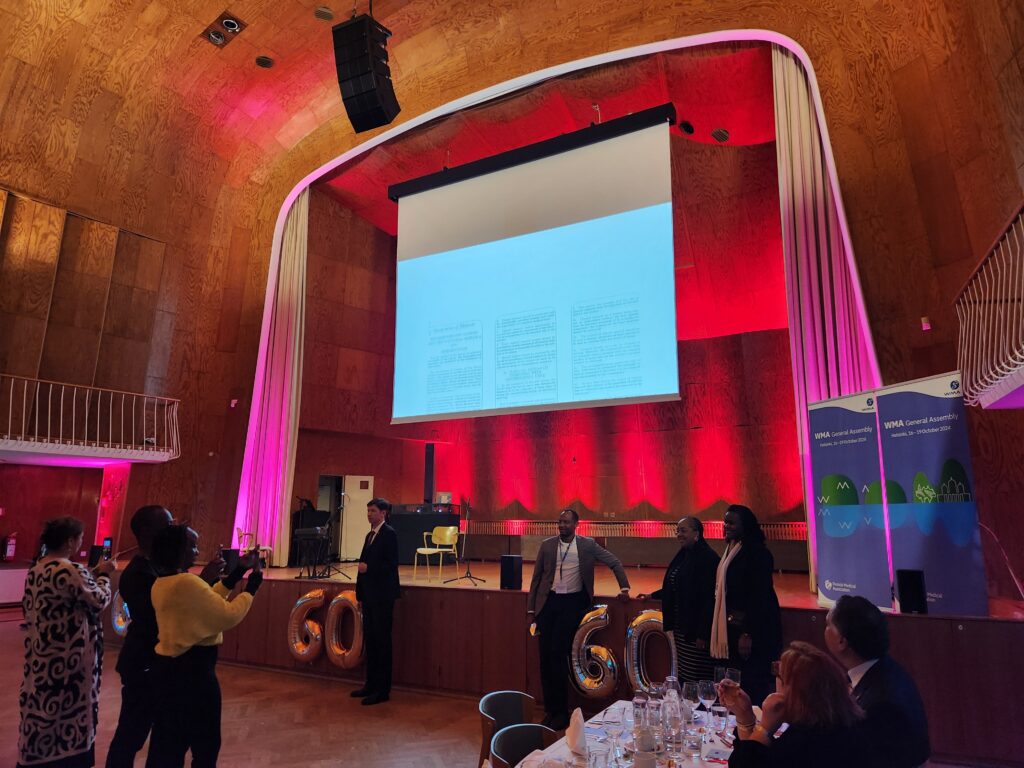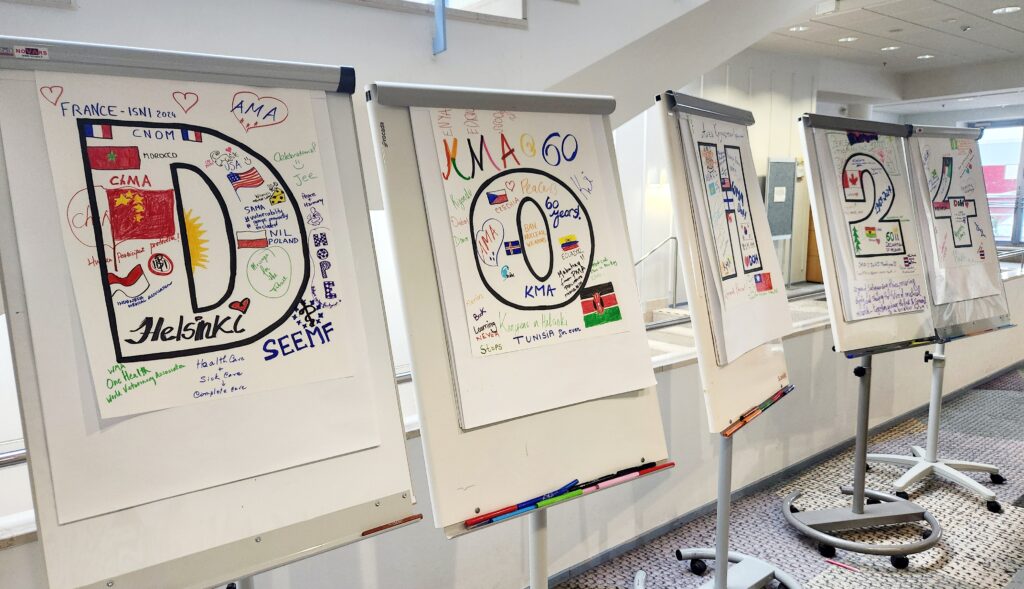The Declaration of Helsinki has been revised for the ninth time on its 60th birthday, taking into account new health research issues like data collection, AI and the post-pandemic landscape.
The World Medical Association (WMA) was founded in 1947 in the aftermath of the Second World War. At that time, there was international disquiet about the actions of some doctors during the conflict. For that reason, the WMA has always had a strong focus on the ethical conduct of the medical profession and how to support this aim. One of the key WMA documents is the Declaration of Helsinki (hereafter, Declaration) created in 1964 to provide guidance on medical research involving human participants.
The Declaration has been revised and refreshed a number of times and the latest version is the ninth in the series. While only a guideline document — with no international legal implications — the Declaration has underpinned and influenced many ethics bodies globally including the United States Food and Drug Administration. It aims to strike a balance between the interests of people who participate in medical research and the interests of the community at large. The fundamental principles of the Declaration are based on respect for individuals, their right to make informed decisions, and recognition of vulnerable groups in the conduct of research.
The current revision took more than two years and was led by the American Medical Association. It involved not only a large number of WMA member associations but also external organisations. It has dealt with some issues that could never have been envisioned by its founders, such as “big data” and artificial intelligence. It also has taken a fresh post-pandemic look at research in public health emergencies, new trial designs, the true role of placebo trials, research in resource-poor settings, community inclusiveness, and working with vulnerable groups. As these new proposed changes to the Declaration were reviewed, there was extensive and passionate discussion about the document.

The importance of language
The first visible change is replacement of the term “subjects” with “participants” throughout the Declaration “out of respect for the rights, agency, and importance of those individuals.” It may seem like a small change, but language is important and sets the tone of any document. There are multiple ethical, psychological and practical dimensions of conducting research on human beings: the term “subjects” implies passivity and contradicts the principles of informed consent and participant autonomy, whereas medical researchers commonly maintain a similar doctor–patient relationship with participants.
The revised Declaration also introduces new language about the importance of meaningful engagement with potential participants and their communities:
“Meaningful engagement with potential and enrolled participants and their communities should occur before, during, and following medical research. Researchers should enable potential and enrolled participants and their communities to share their priorities and values; to participate in research design, implementation, and other relevant activities; and to engage in understanding and disseminating results.”
Community engagement will bring both benefits and challenges for researchers and the institutions that support their work. These new elements in the Declaration will bring rewards but, undoubtedly, will impose new but worthwhile burdens.
Minimising harm
Other important changes reinforce the concept that medical research should be designed and conducted in a manner that avoids or minimises possible harm to the environment and strives for environmental sustainability. As the scientific session that accompanied the WMA General Assembly in Helsinki was themed around climate change and its health effects, such an enhancement of the Declaration makes sense. It is also clear that, in a time of resource scarcity, medical research must serve a purpose and not be conducted either with no regard for competing resource demands or the prospects of leading to new knowledge. The Declaration now states:
“Medical research involving human participants must have a scientifically sound and rigorous design and execution that are likely to produce reliable, valid, and valuable knowledge and avoid research waste. The research must conform to generally accepted scientific principles, be based on a thorough knowledge of the scientific literature, other relevant sources of information, and adequate laboratory and, as appropriate, animal experimentation.”
Previous iterations of the Declaration were — amazingly — silent on the issue of scientific and research misconduct. That medical research should not only be undertaken ethically but with the highest levels of integrity and honesty seems so obvious that it is easy to overlook just how concerning scientific misconduct is. The Declaration is now explicit:
“Scientific integrity is essential in the conduct of medical research involving human participants. Involved individuals, teams, and organizations must never engage in research misconduct.”
Fair, ethical and equitable engagement with — and treatment of — vulnerable participants and communities is also top of mind in the Declaration. Protection of the vulnerable is a fundamental tenet of medical research, but this does not necessarily mean that such individuals and groups should not participate. Aversion to research in such groups can also have negative side effects. Most notably, by protecting vulnerable populations, we might have stifled adequate research involving these very subjects. This nuance — working respectfully and meaningfully with the vulnerable to seek ways of better helping them without harm — underpins new and important wording. The former statement was that “some groups and individuals are particularly vulnerable and may have an increased likelihood of being wronged or of incurring additional harm. All vulnerable groups and individuals should receive specifically considered protection.” In its place, we now read:
“Some individuals, groups, and communities are in a situation of more vulnerability as research participants due to factors that may be fixed or contextual and dynamic, and thus are at greater risk of being wronged or incurring harm. When such individuals, groups, and communities have distinctive health needs, their exclusion from medical research can potentially perpetuate or exacerbate their disparities. Therefore, the harms of exclusion must be considered and weighed against any harms of inclusion. In order to be fairly and responsibly included in research, they should receive specifically considered support and protections.”

Data collection and storage
Other fundamental changes to research conduct have been the impact of storage of participant data — including genetic data and tissue biobanks — and the use of artificial intelligence with “big data.” There are also now risks regarding re-identification from large de-identified datasets. These are new and critical issues that did not exist in the past. To capture these important concepts, the Declaration now states:
“Physicians or other qualified individuals must obtain free and informed consent from research participants for the collection, processing, storage, and foreseeable secondary use of biological material and identifiable or re-identifiable data. Any collection and storage of data or biological material from research participants for multiple and indefinite uses should be consistent with requirements set forth in the WMA Declaration of Taipei, including the rights of individuals and the principles of governance. A research ethics committee must approve the establishment and monitor ongoing use of such databases and biobanks. Where consent is impossible or impracticable to obtain, secondary research on stored data or biological material may be done only after consideration and approval of a research ethics committee.”
Placebos
Another important consideration is that of placebo-controlled trials. For many conditions, a new treatment looks to improve outcomes over an existing treatment — not no treatment at all. Concerns about the ethics of placebo use, rather than comparing a new treatment against an established one, are captured in the updated Declaration as follows:
“The benefits, risks, burdens, and effectiveness of a new intervention must be tested against those of the best proven intervention(s), except in the following circumstances: where if no proven intervention exists, the use of placebo, or no intervention, is acceptable; or where if for compelling and scientifically sound methodological reasons the use of any intervention other than the best proven one(s), the use of placebo, or no intervention is necessary to determine the efficacy or safety of an intervention; and the patients/participants who receive any intervention less effective other than the best proven one(s), placebo, or no intervention will not be subject to additional risks of serious or irreversible harm as a result of not receiving the best proven intervention. Extreme care must be taken to avoid abuse of this option.”
Closing misinterpretation loopholes
The pandemic has also brought to light the potential for the misinterpretation of research principles. It became clear that many doctors and others took the old phrase “may use” from the previous version to justify use of therapies already proven ineffective (Ivermectin being a good example) out of context: “In the treatment of an individual patient, where proven interventions do not exist or other known interventions have been ineffective, the physician, after seeking expert advice, with informed consent from the patient or a legally authorised representative, may use an unproven intervention if in the physician’s judgement it offers hope of saving life, re-establishing health or alleviating suffering.”
This is recast, in the aftermath of abuses during the pandemic, as follows:
“When an unproven intervention is utilized in an attempt to restore health or alleviate suffering for an individual patient because approved options are inadequate or ineffective and enrolment in a clinical trial is not possible, it should subsequently be made the object of research designed to evaluate safety and efficacy. Physicians participating in such interventions must first seek expert advice, weigh possible risks, burdens, and benefits, and obtain informed consent. They must also record and share data when appropriate and avoid compromising clinical trials. These interventions must never be undertaken to circumvent the protections for research participants set forth in this Declaration.”
Research is fundamental to progress and innovation in health care. It underpins everything we do and the way we do things. We have so much to learn and, in the post-pandemic era, it is critical that human research efforts are directed in ways that do the most good, respect participants, and make the best use of health care resources. The refreshed version of the Declaration will go a long way to supporting these aims — for now.
Steve Robson is Australia’s delegate to the World Medical Association.
The statements or opinions expressed in this article reflect the views of the authors and do not necessarily represent the official policy of the AMA, the MJA or InSight+ unless so stated.
Subscribe to the free InSight+ weekly newsletter here. It is available to all readers, not just registered medical practitioners.
If you would like to submit an article for consideration, send a Word version to mjainsight-editor@ampco.com.au.

 more_vert
more_vert
Has the October 2024 revision of the DoH been accepted/adopted by the Australian Government?
Should look more into AI in research and clinical practice.